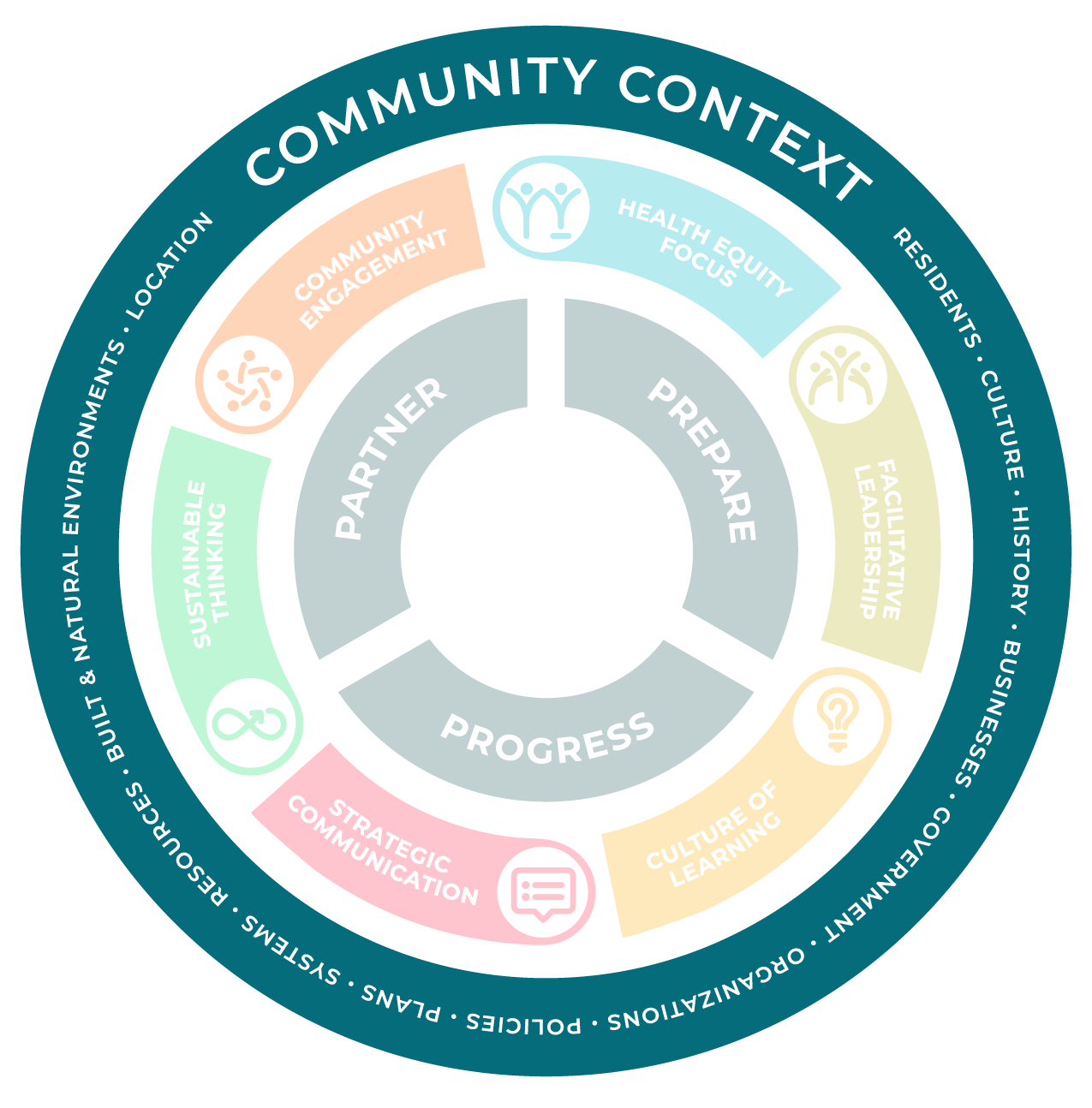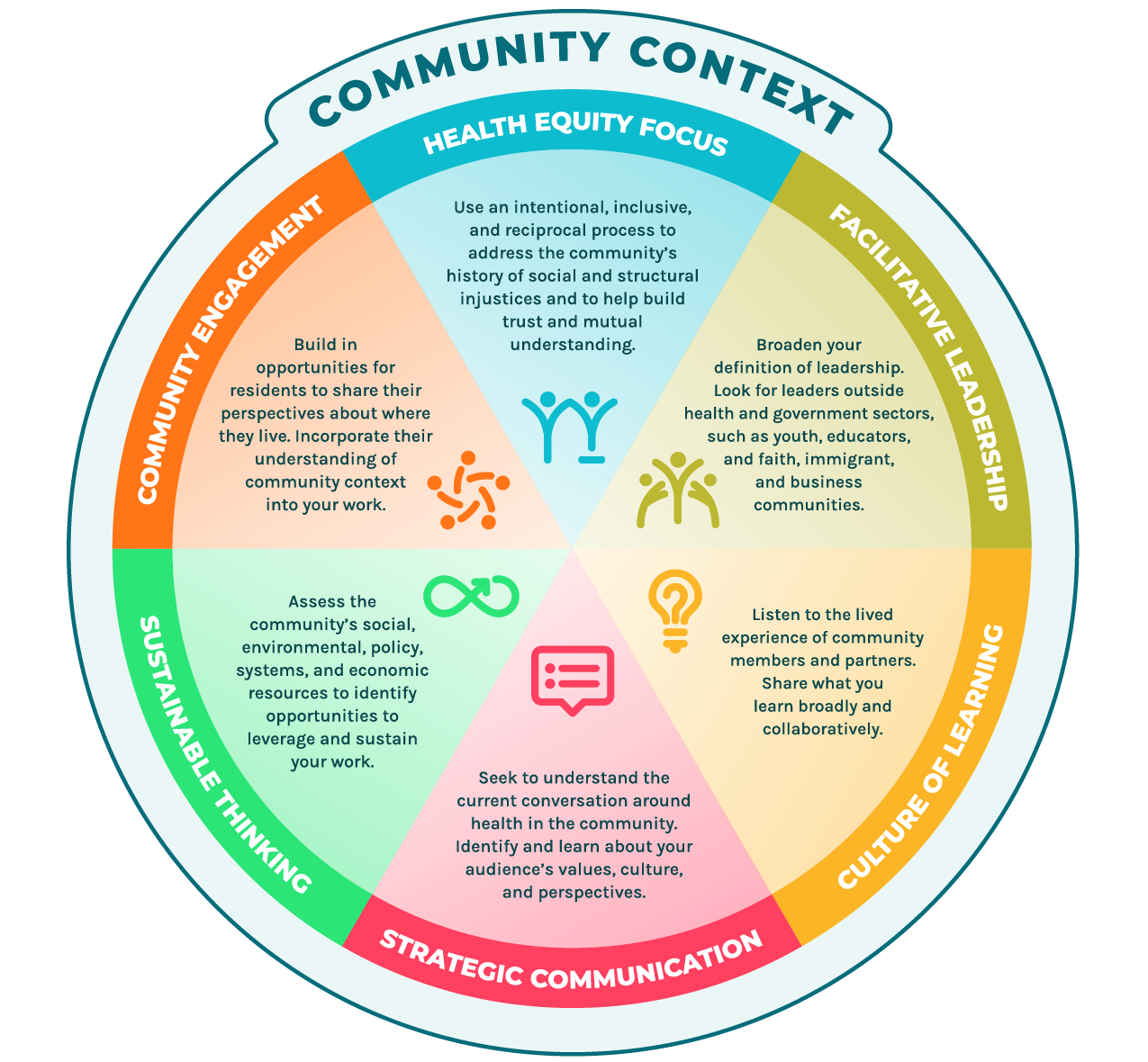Community context plays a vital role in healthy communities work.
Every community has its own culture, assets, history of achievement, and challenges on which to build. When funders, local leaders, and partnerships fully recognize and understand these unique community settings, it helps direct strategies and tactics to better align with and leverage various dynamics at play. Recognizing, honoring, and accounting for community context matters at every stage of the work. As coalitions move through the Community Action Model, this context should be kept in mind to ensure a more rooted approach for long-term sustainability.

Residents, Culture, and History
- Many communities have a long history of formal and informal resident engagement, which may manifest itself through neighborhood associations, youth councils, congregations, and other avenues of civic participation.
- Culture and history play a significant role in understanding opportunities for (and sometimes resistance to) partnership and community engagement. They should inform preparation efforts, especially relationship building and strategy selection.
- Communities with a history of social and structural injustices such as racism, classism, and other “isms” may require a more intentional, transparent, reciprocal, and action-oriented process in order to build the relationships, mutual understanding, and trust that is necessary for success.
Business, Government, and Nonprofit Sector(s) and Coalitions
- Business leaders have a keen understanding of economic opportunities that may result from a healthier community and can often contribute financial and in-kind resources.
- Longtime local leaders and government officials have considerable control over community resources and policy-making processes and can be trusted, powerful allies and champions. They can also be sources of mistrust and resistance to change in a community.
- Active nonprofit and service agencies typically serve vulnerable populations. They are often effective advocates, have frequent contact with residents and civic groups, and are capable of bringing new grants and complementary resources for health improvement initiatives.
- Likewise, appointed advisory boards and community coalitions can offer their networks, knowledge, and diverse perspectives.
Programs, Policies, Plans, and Systems
- Local policies and plans can present both opportunities for and barriers to health, so community-change partners are wise to consider these as elements that can promote or hinder healthy lifestyles.
- Existing programs may offer an opportunity to leverage advocacy efforts toward supportive policies and to build demand for healthier community environments.
- Changes to local and regional systems, like criminal justice, education, transportation, healthcare, housing, parks/recreation, and food systems represent integrated, comprehensive, and sustainable ways to improve population health by addressing many of the root causes that contribute to inequitable health outcomes.
Resources, Environments, and Location
- Existing resources may be used to leverage financial and in-kind investments from local foundations, corporations, governments, and other key stakeholders which, in turn, can complement and accelerate community change efforts.
- Built and natural environments present both opportunities for and barriers to health, so community-change partners are wise to consider these as elements that can promote or hinder healthy lifestyles.
- Geographic location may offer unique or differing opportunities for achieving goals. For example, a community with a winter climate will require different strategies than one in a temperate climate. Some locations also may have specific political or natural boundaries, like those that border other countries or are surrounded by mountains and rivers.
Supporting Resources:
To learn more about addressing community context, explore these resources, stories, and lessons learned. Additional resources can be found on our Blog page by using the tags.
- Download the Essential Practice Wheels, which offer concrete examples of how to sustain community-led action to improve community health.
- Investing in Healthy Community Change: Chapters 2 and 3
- Active Living By Design Blog: Smarter About Context
- Fit Together Report: Communities on the Move
- Fit Community Report
